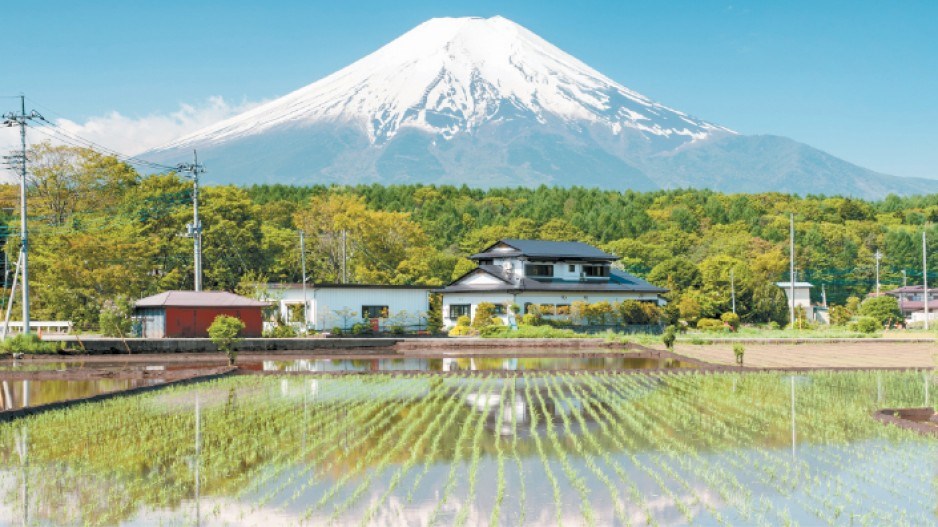Japan's agriculture industry is in a state of near collapse, and it is uncertain whether the two looming cold showers of entry into the free-trade Trans-Pacific Partnership or the muscular deregulation policies of Prime Minister Shinzo Abe can revive it.
What has brought Japan's farms and farmers to this parlous state is decades of highly protective government policies based on both subsidies and sometimes outlandishly high tariffs on imports.
Some of the drives behind these policies have been altruistic, others less so.
The production of rice, fruit and vegetables of superb quality is an essential part of Japan's staunchly individual culinary culture.
There is also a strong tradition of wanting to be self-sufficient in food.
Other drives for generations of Japanese politicians to ring-fence the country's agriculture industry are more crass. The gerrymandering of parliamentary constituencies means that rural votes are worth nearly 2.5 times as much as those of urban voters.
This imbalance, aggravated by rural depopulation in recent years, has played a significant part in keeping the Liberal Democratic Party (LDP) in power for most of the last 60 years. That is changing as Japan's agricultural sector tips into a condition of near-dysfunction. The picture is bleak. The average age of Japan's 2.5 million farmers is 65.8 years, and they earn on average the equivalent of only $5,000 a year, even though they receive about $20 billion in subsidies.
Government efforts to bolster farm incomes by, for example, driving up rice prices have failed utterly. About 1.1 million hectares of land are lying unused as 981,000 of Japan's 2.5 million farmers follow government directives to cut back on rice production in order to boost prices. To the same end, Tokyo imposes import taxes on rice of up to 1,000%.
None of these and similar measures have worked.
Domestic farmers produce only 44% of Japan's food supply. Japan's farming industry contributes only 0.17% to the country's total gross domestic product.
Prime Minister Abe and his LDP government came to power a year ago on a pledge to revive Japan's economy, which although still the world's third largest, has been stagnant for the best part of two decades.
A key element of what has become known as "Abenomics" is removing subsidies and regulations in industry and agriculture to make them more competitive.
In November the government signalled its intention to liberate agriculture by announcing the withdrawal by 2018 of subsidies paid to farmers who agree to reduce their acreage under rice cultivation.
A number of policies have discouraged the growth of fewer but more efficient and larger farms in Japan. Taxes on rural land are almost non-existent in many areas, strong tenant rights discourage the leasing of land, and lax planning laws allow the easy change of usage for real estate development.
It is probable that the Abe government will try to change some of these policies, even in the face of opposition from its own rural backbenchers. The government is likely to encourage the further growth of farming sectors that are already profitable and functioning efficiently such as the production of broiler chickens, eggs, milk cows and pork.
The Trans-Pacific Partnership is also likely to have a significant reforming influence on Japanese agriculture.
The United States and other TPP members are looking to remove tariffs on 96% or more of trade. In past free trade agreements, however, Japan has agreed to opening up only about 85% of trade and insisted on continued protection for its farmers.
Tokyo is still trying to protect its domestic rice, sugar, wheat, beef and pork production to a degree but will probably have to back down significantly if it wants to be in the TPP club. •
Japan's changing palate provides export opportunities for B.C.
Changing diet among Japanese, the Tokyo government's apparent determination to revitalize the country's agricultural sector, and Japan's probable entry into the free trade Trans-Pacific Partnership all bode well for British Columbian food exporters.
After decades of persistent hard work and promotion, Canada has established a solid export business with Japan's tough and demanding food and agricultural products market, worth about $4 billion a year.
Japan is now the second largest importer of Canadian agricultural products after the United States.
It is a trade, however, dominated by agricultural commodities such as canola seed, frozen pork, wheat and soybeans.
That appears set to change.
Western dietary influences are leading the Japanese to eat more meat and reduce their rice consumption. They are also moving away from fresh foods and toward pre-cooked, chilled and frozen foods.
Those shifts together with the opening up of the Japanese food and agricultural market present an opportunity to sell a broader range and larger quantities of products making up British Columbia's $2.5 billion annual agrifood export business.
The federal and B.C. provincial governments announced a few days ago programs to help food exporters reach into those markets.
Ottawa said it will set up a $4.3 million program to promote the export of agricultural and food products.
Money, which in B.C. will be matched by the provincial government, will fund participation in international trade shows, promotional events, trade missions and developing marketing materials for international audiences.
$4 billion: Annual value of Canada's food and agriculture exports to Japan
$2.5 billion: B.C.'s annual agrifood export business
$4.3 million: New money set aside by Ottawa to fund a program to promote agricultural and food exports




